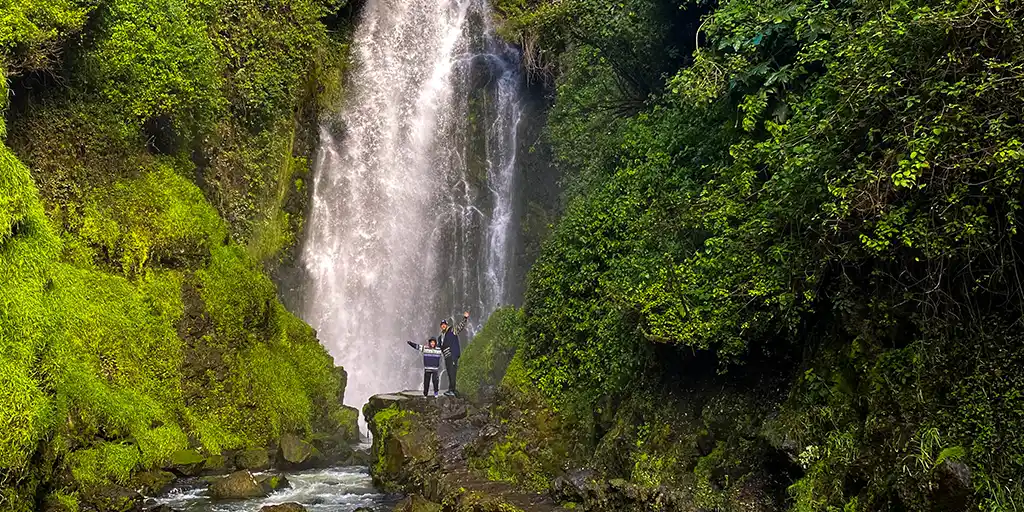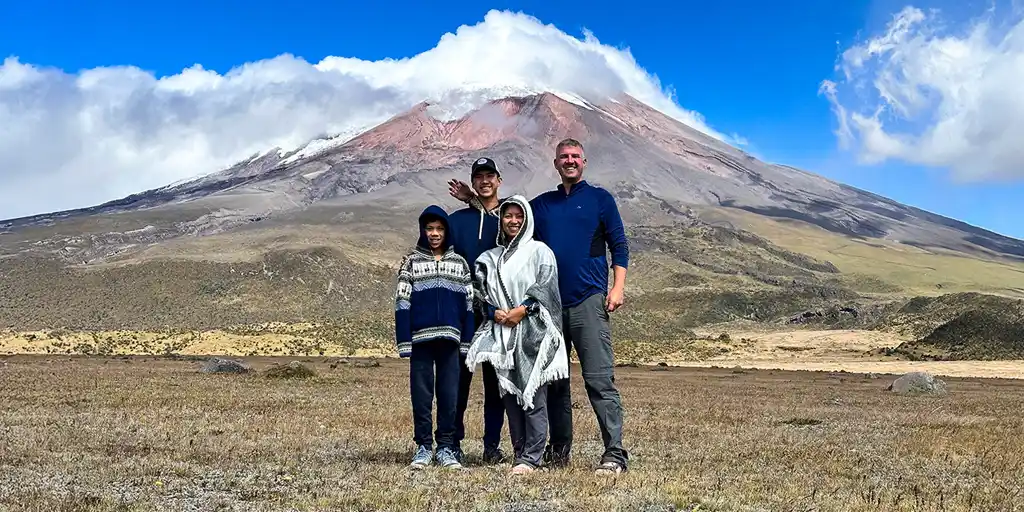Explore Quito in 2 days with our family-friendly itinerary! Uncover top attractions, local food, and safe ways to experience this exciting city, your perfect starting point for Ecuador & the Galapagos.
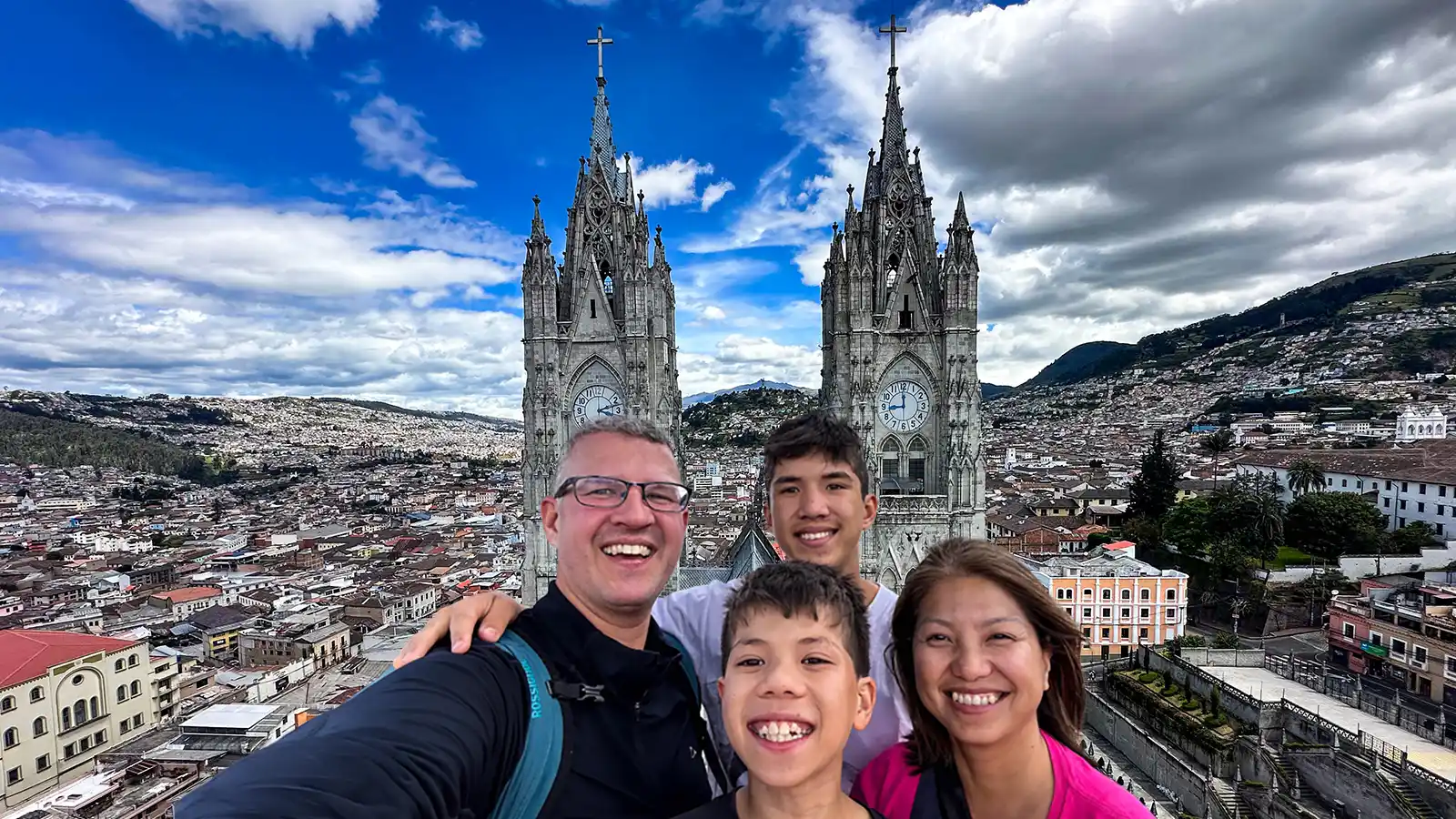
When Christina and I were planning our first visit to Ecuador, there were a lot of whispers about safety. Notions and comments from across the internet and from friends and neighbors that painted places like Quito with a brush of apprehension.
We’ve traveled around the world. 30-plus countries of family travel, including journeys into many cities that we’ve been warned about. And not once have we encountered something that made us feel unsafe. But we always heed the whispers and prepare accordingly.
When we arrived in Quito, with a two-day family travel itinerary in the Andean metropolis, our guard was up. But what we found wasn’t a city to be wary about, but an energetic, exciting, and beautiful place that was bursting with life, music, and great food. The neighborhoods were painted, not just with bright murals and street paintings, but with the friendly smiles of locals happy to welcome strangers to their home.
Quito was an eye-opener. After visiting many South American capitals such as Lima, Bogota, and Buenos Aires, Quito presented something completely different from each of those big cities. The four of us, Christina, Cohen, Dylan, and I, couldn’t help but find Quito genuinely cool.
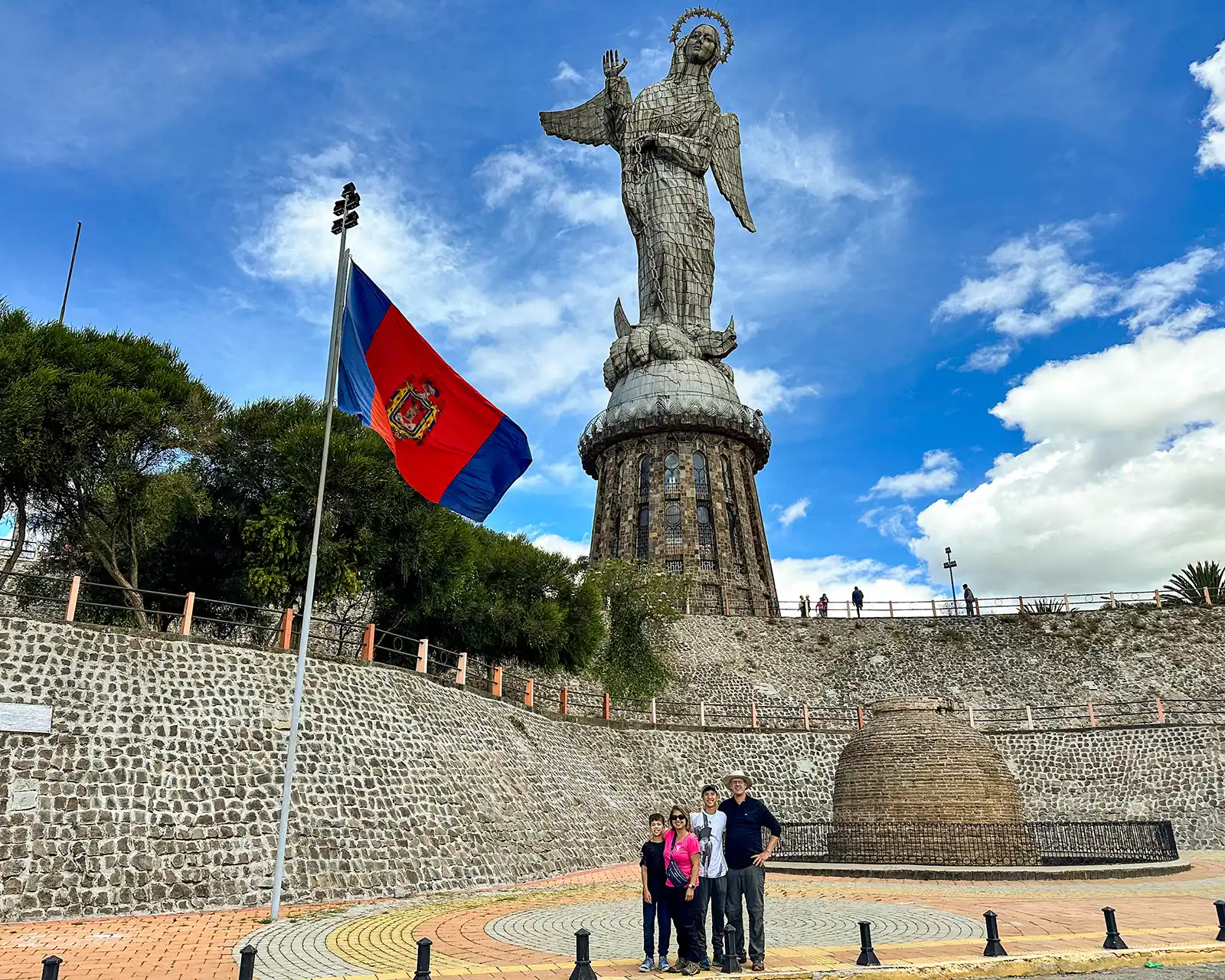
Quito was like an unexpected travel companion. One with whom you agree to head out on an adventure, unsure about whether you’ll click. And at each turn, you discover an infectious energy that adds just a little extra flavor to each experience. And by the time it’s all over, you’re left looking at absolutely everything in a different light.
Our two days in Quito were a launching pad for an adventure into some of the best places to visit in Ecuador. Our Ecuador itinerary took us from the Andean heights of Quito through the markets of Otavalo, the beauty of Cotopaxi National Park, the sparkling waters of Quilotoa, the vast depths of the Amazon Rainforest, and across to the wilds of the Galapagos Islands. But this city wasn’t just a stopover to greater adventures; it was a journey all on its own.
For two days, we experienced some of the best things to do in Quito, hitting some of the city’s top attractions and uncovering gems that were completely unexpected. We visited local eateries, eye-opening destinations, and saw things that made our jaws hit the floor. So buckle up, because this isn’t just a tourist brochure; it’s a deep dive into family experiences in Quito. One that just might have you planning your own visit to the capital of Ecuador.
Why Visit Quito With Kids
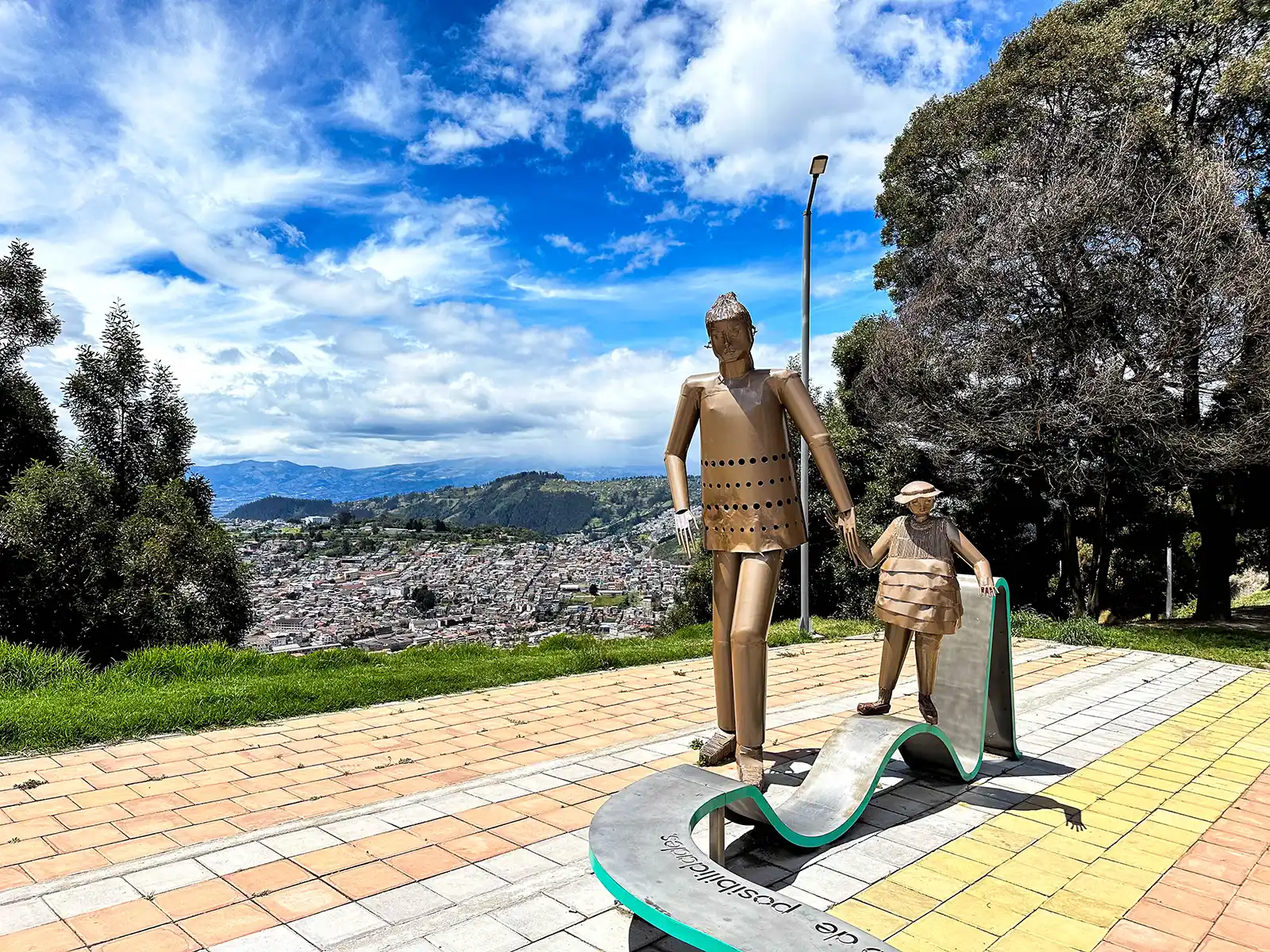
Quito is like a vertical urban jungle. Surrounded on all sides by the Andean mountains in all of their volcanic glory, this city is as far from Manhattan as you can get. There isn’t one grid here; all of the streets wind, swerve, climb, and dive through the mountainous terrain.
With a wild mix of colonial style and traditional Indigenous flavor, it’s a city where you never know quite what you’re going to see around the next corner. And that’s one of the reasons it’s so great to explore. Yes, you’re calves will get a workout, but it’s worth every strain.
The style leaps from slices of old Europe to local markets selling traditional Ecuadorean textiles in an instant. One instant you’re taking in the golden hues of centuries-old churches, the next you’re bumping shoulders with a Quechuan woman hocking wares while guiding her llama through the streets. Quito is a wild adventure, so be prepared.
For families, this sensory overload is a riot. The history of the city breathes through cobblestone streets. While Quito’s blueprint is unmistakably Spanish, its artwork lies on an Andean canvas imagined through the centuries by Indigenous locals. It’s a conversation of cultures that have learned to co-exist to shape their unique future. Even screen addicted kids will be hard pressed not to pull their noses up from their devices to take it all in.
And the best part about family travel in Quito is that you won’t need a guide to bring you through it all. Sure, it helps. Guides know their way around; they can help you navigate lines, get tickets, and organize your time as efficiently as possible. But DIY Quito travel for families is totally doable.
Here’s what we did and how we did it.
Quito Itinerary For Families
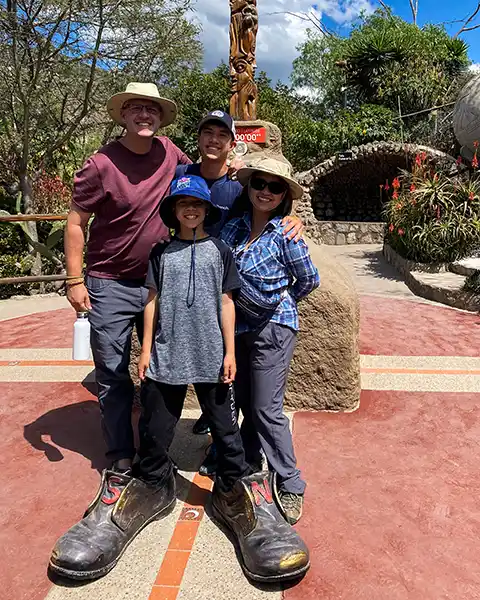
We landed in Quito at 9:00 am after an overnight flight from Toronto. After navigating the airport, we met up with our guide, an Ecuadorian local named Angel Rea, who runs a company called Quinde Adventure. We would have been happy to explore the city on our own, but because we were trying to explore Quito in two days, a little help would ensure that we wouldn’t waste precious time navigating transit systems and figuring out what to do next.
It was early, so rather than head straight to our hotel, Angel suggested that we hit the ground running and start with some of the best things to do in Quito. We were rested and ready to explore, so we were on board with his plans
Virgin of the Panecillo
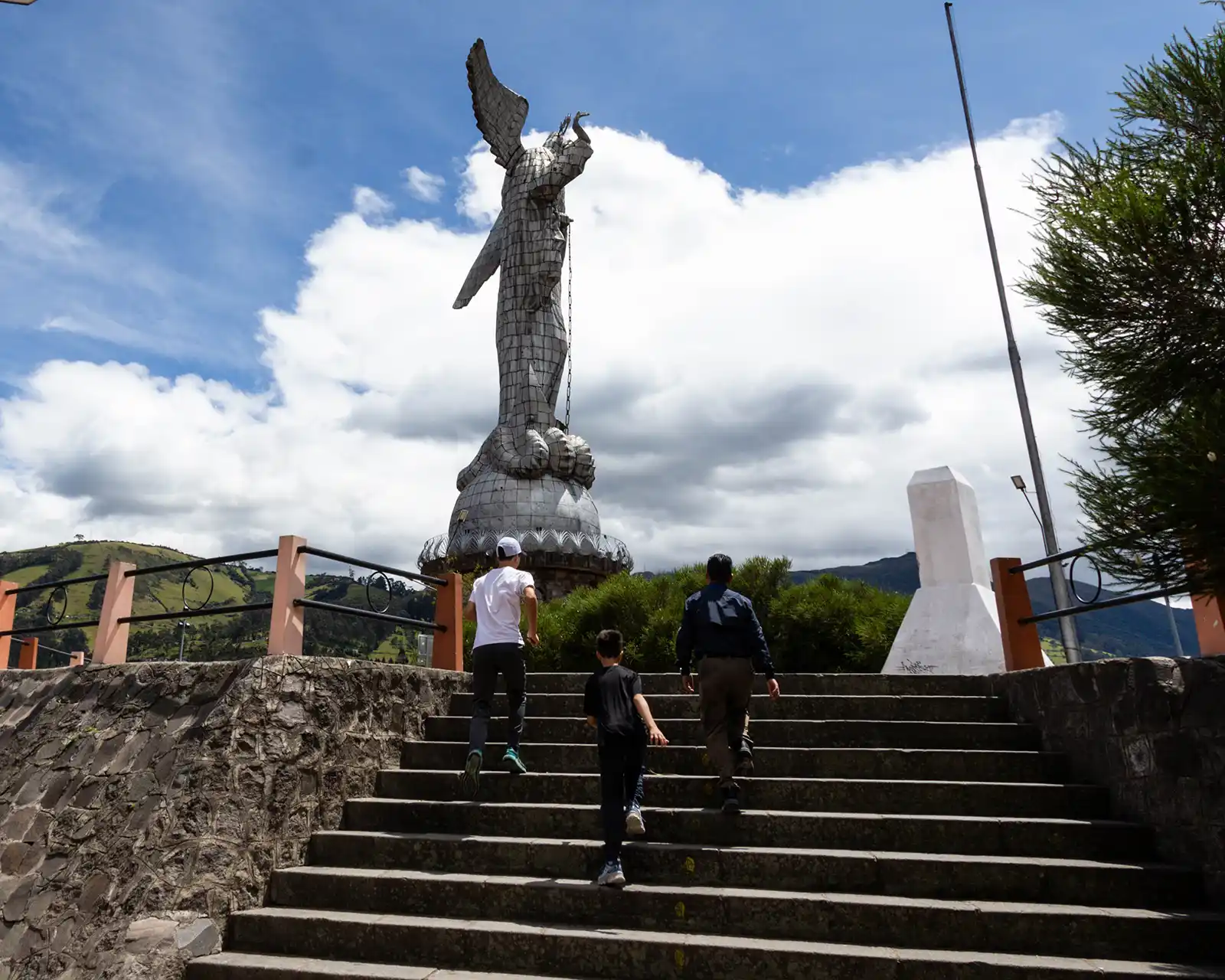
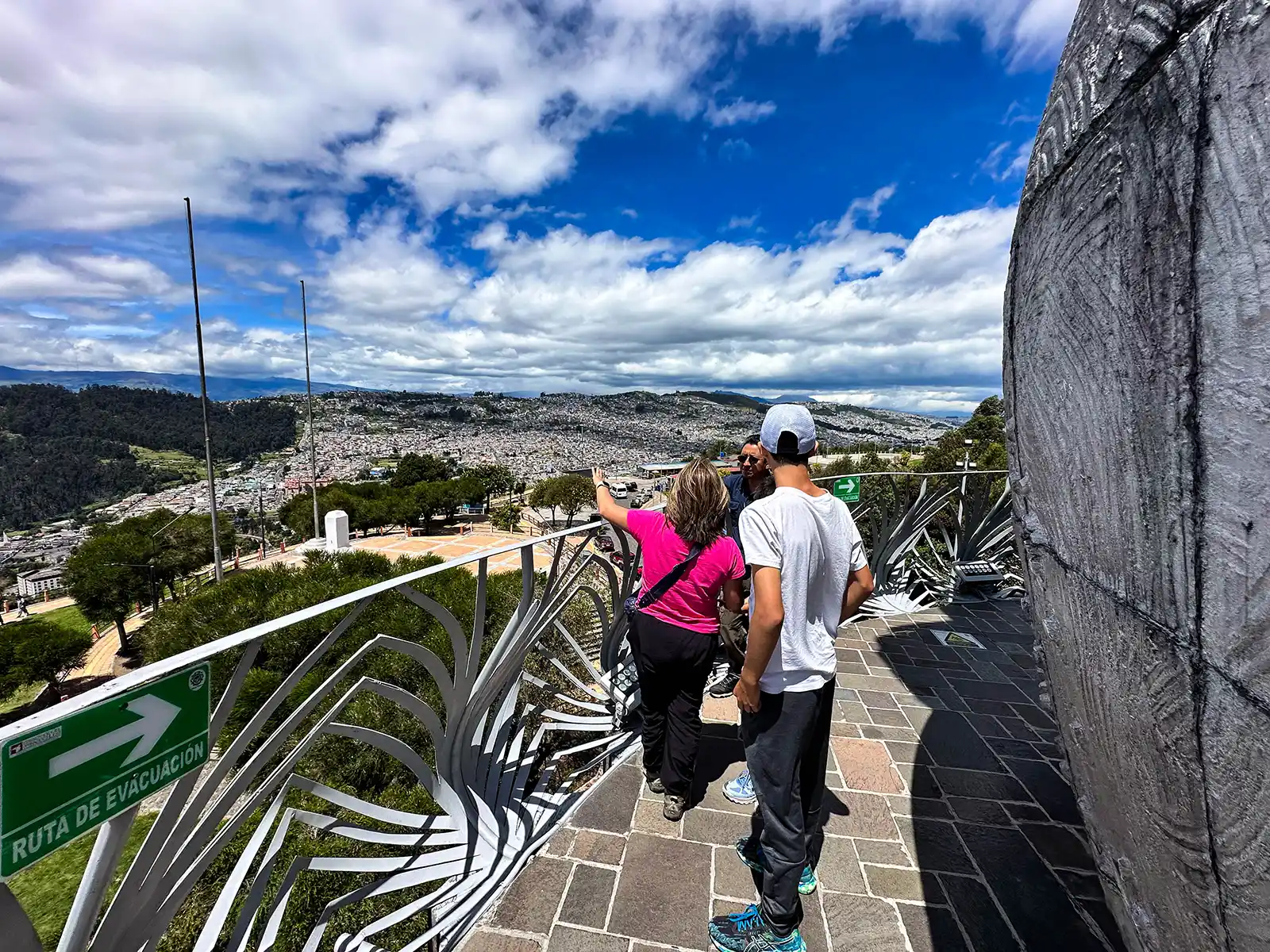
We drove into the city and up through the narrow, winding streets, taking in the bright, colorful murals that decorate the city and straining our necks to take in the surrounding snow-capped mountains. Soon we arrived at the first stop in our Quito itinerary, the Virgin of the Panecillo.
Perched atop a hill, like a guardian angel watching over the sprawl of Quito, the Virgin of the Panecillo was the perfect start to our travels in the city. This thing is colossal. A winged beacon that can be spotted from pretty much anywhere in the city. And from its viewing deck, Quito spread out like a map before us.
The view from the Virgin of the Panecillo is like nothing else in the city. If you’re going to start hitting up the best places to visit in Quito, this is where you want to start. From the majestic volcanoes to the towering spires of the local cathedral, it was all laid out in the raw.
The Virgin of Panecillo isn’t just a statue, though. The towering structure, named as the Virgin Mary with Wings, was consecrated in 1975. The inside is a small museum with photos from the city spread throughout. Nearby is a local market where we got our first taste of some local Ecuadorian food like colado morada, a drink made from corn and flavored with different fruits. It was so sweet, almost like drinking watery jam. Realizing our travel hunger, we ravaged plates of llapingachos and empanadas as well. The empanadas in Ecuador aren’t like those elsewhere in South America; they’re light and flaky, not heavy.
Basílica del Voto Nacional
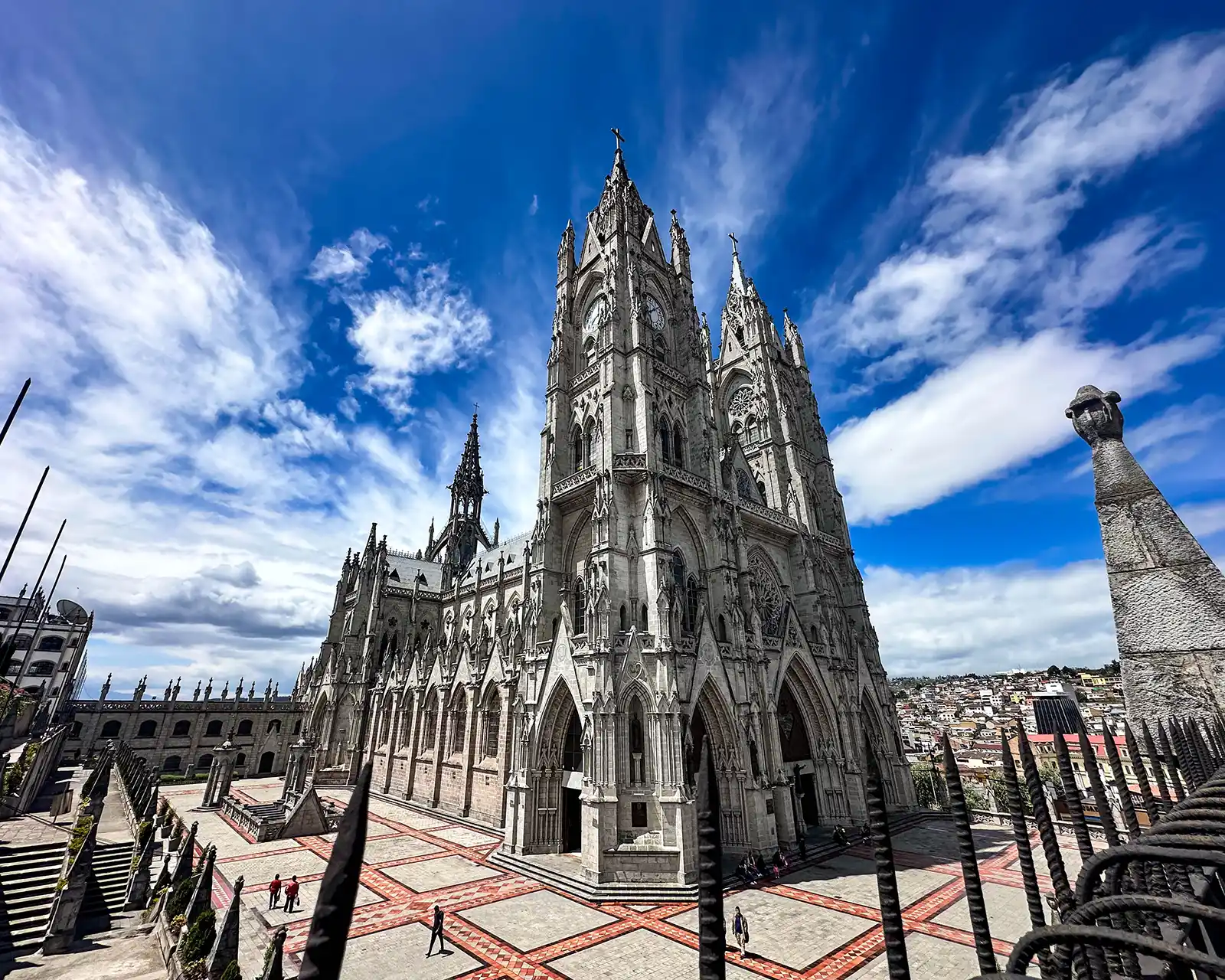
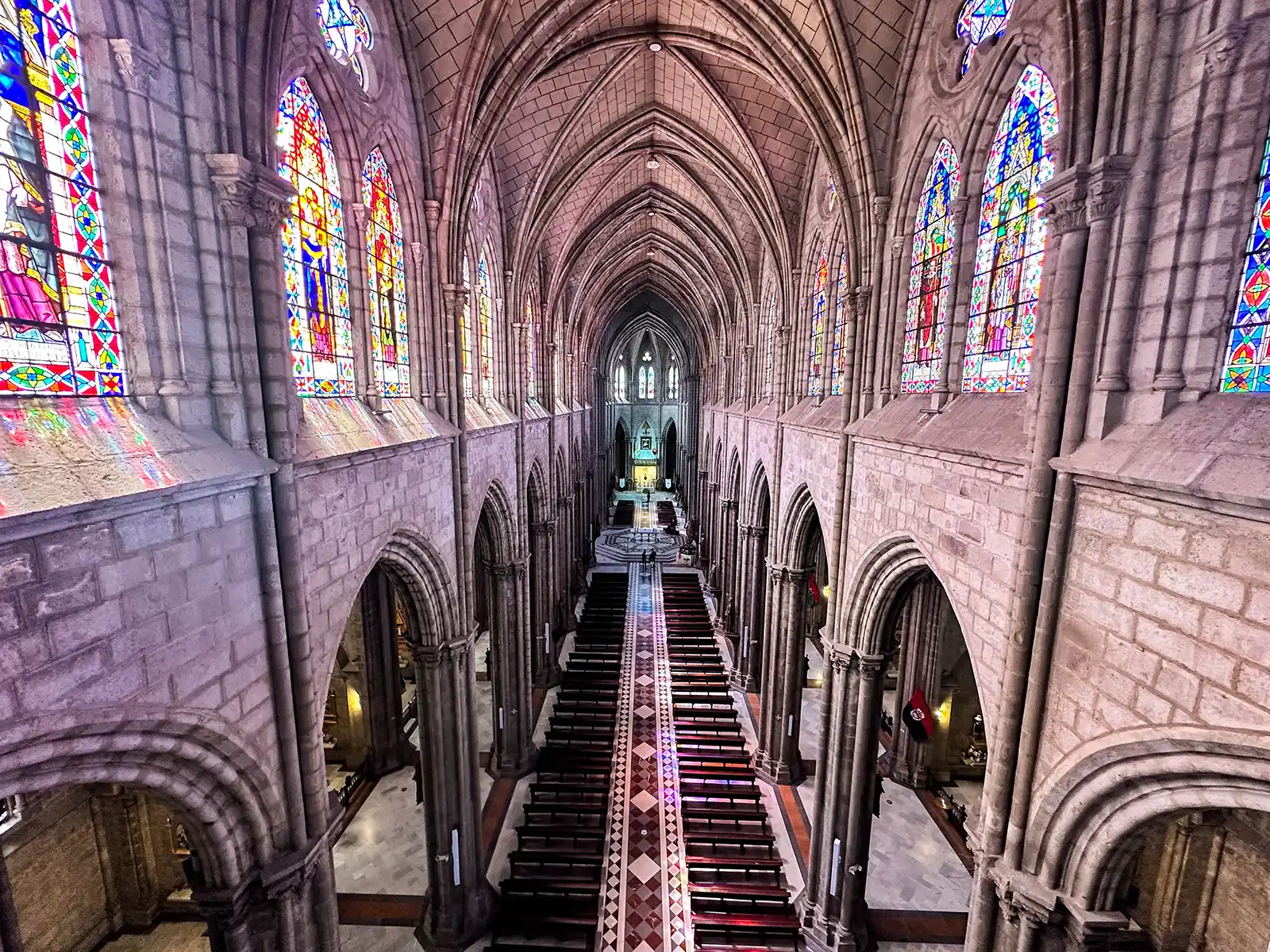
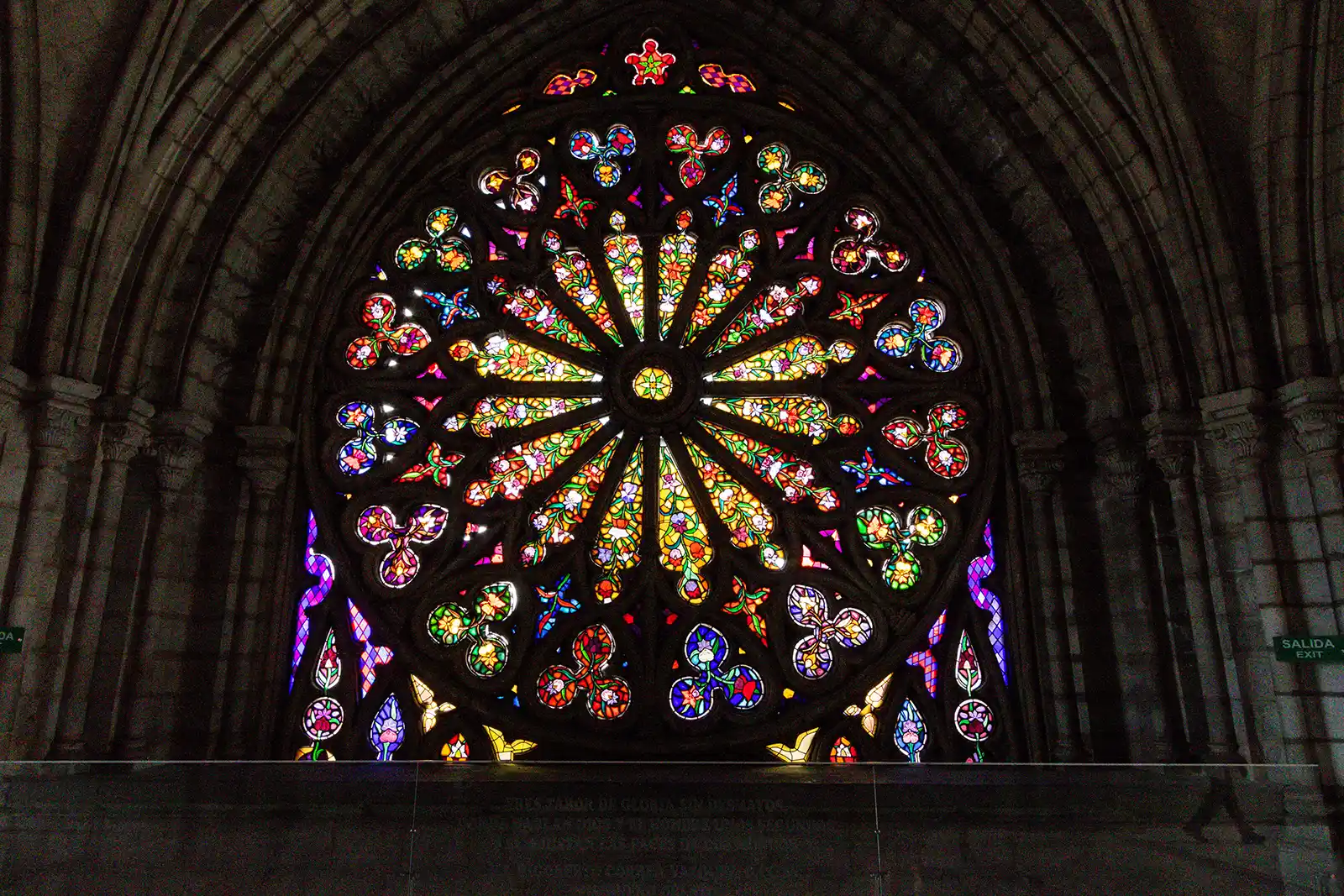
Dylan was the first to point out one of the most prominent views from the Virgin of the Panecillo, a massive cathedral in the center of town that the rest of the city seemed to radiate from. This was our next stop, the impressive Basílica del Voto Nacional, one of the newest and most stunning churches in Quito.
Although the basilica is tucked into a busy corner in the center of Quito, stepping inside was like leaving the busy city. It was wild walking through the church. Although it was built in 1892, it felt like this place was designed as a non-stop Instagram backdrop. A massive rose window – a kaleidoscope of stained glass that throws these crazy colors all over the stone. A towering attic walkway where local teens launched TikTok dances, and a rooftop with jarring views of the surrounding city. This place was like a giant, intricate jewel, and even the most restless kid will probably stop and stare for a minute.
One of the most fascinating things about the Basílica del Voto Nacional is the way the design plays with space. It’s not at all like the traditional Spanish-style churches you’d expect in a historic city. There’s nothing closed or stuffy about the way it’s laid out. Natural light casts wild shadows and colors, and tall, bright ceilings let light pour through like a modern architect’s dreams. Yet it still maintains a rustic, almost unfinished feel to it.
Another thing that makes the Basílica del Voto Nacional unique is that most churches in Ecuador are adorned with gargoyles. This one, though, is lined with some of the most famous animals that can be found throughout mainland Ecuador and the Galapagos Islands.
It’s one of the most unique churches that I’ve ever visited.
Casa Gagontea
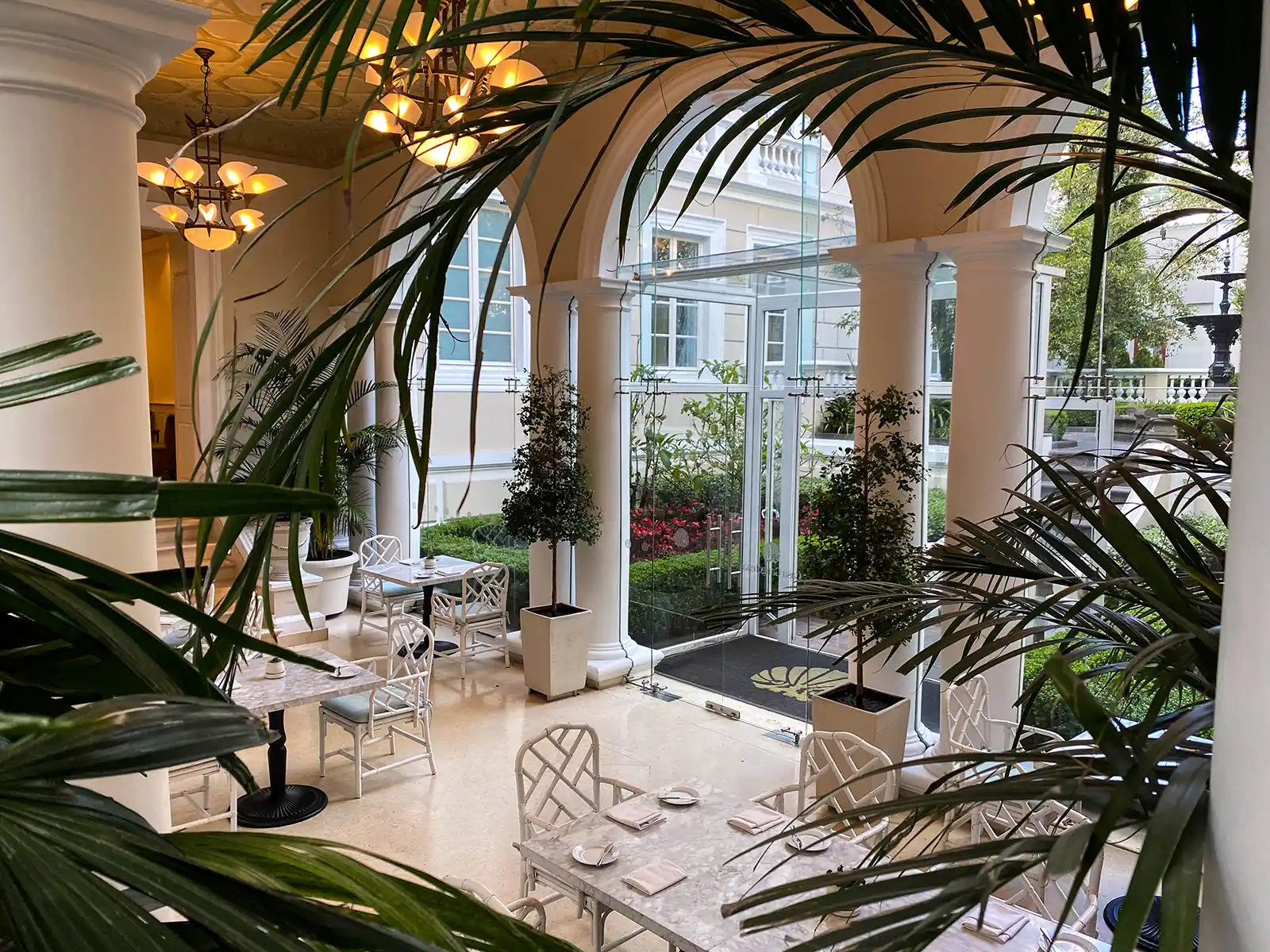
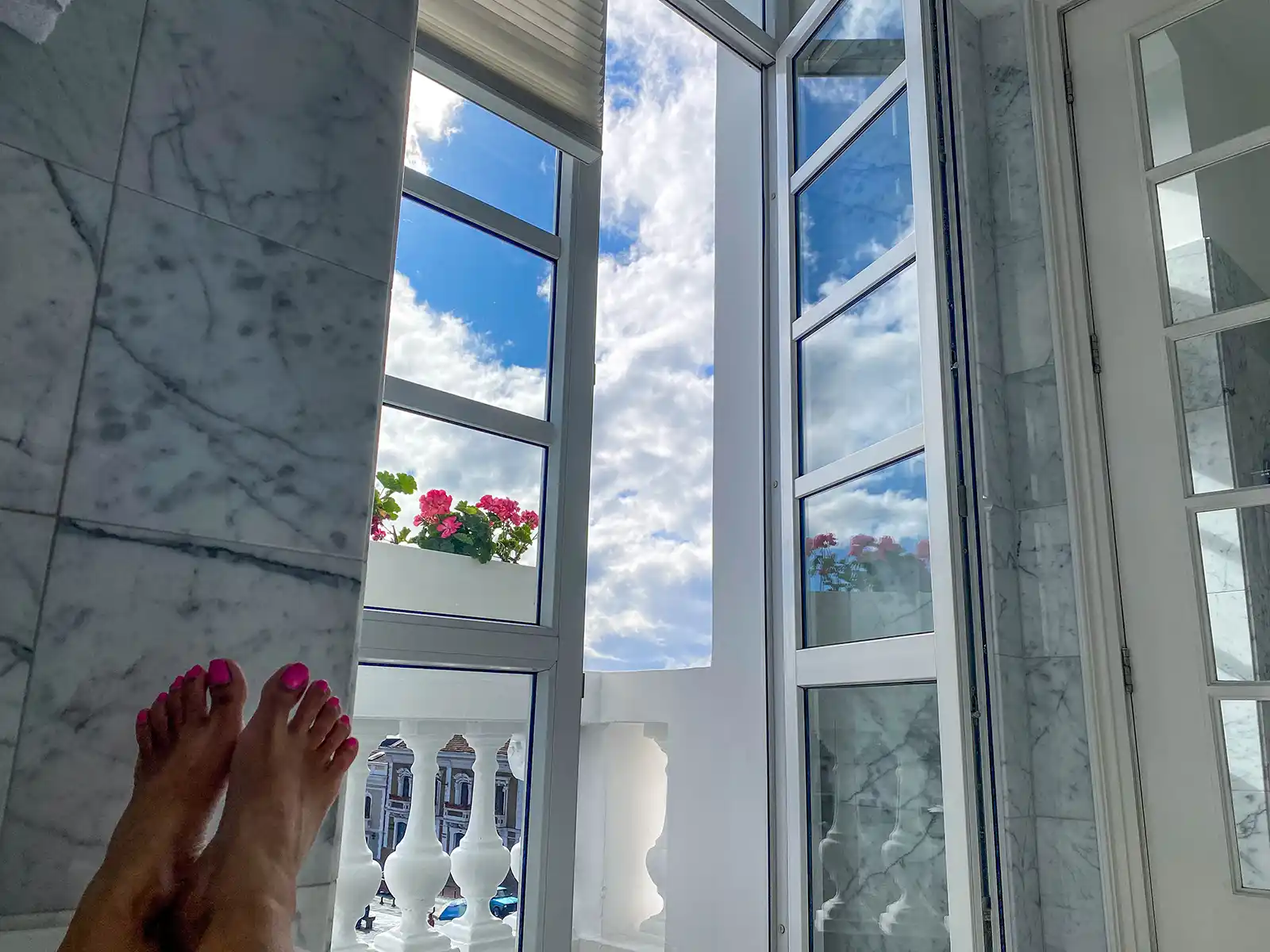
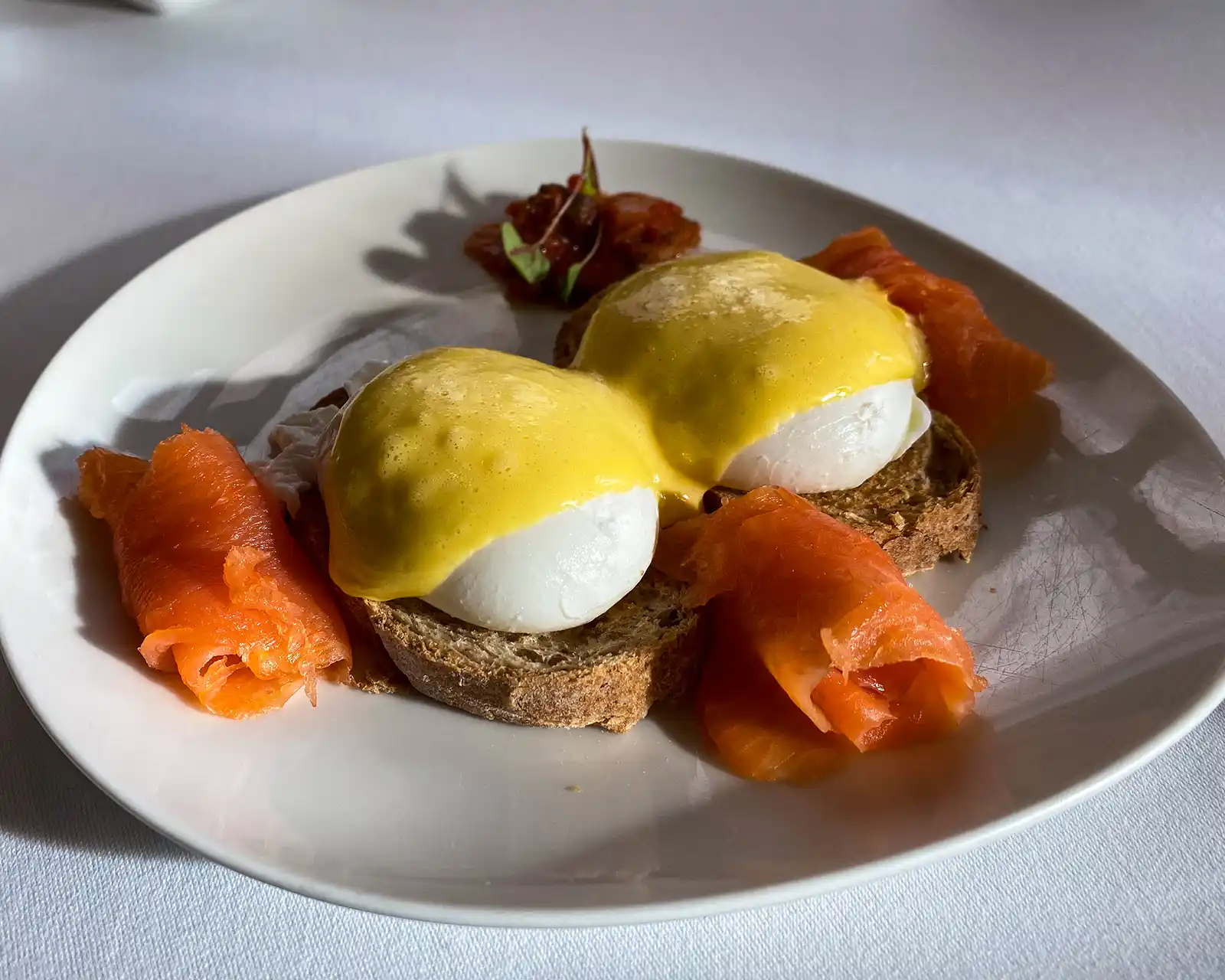
We wanted to spend our afternoon strolling the streets of Quito. But before that, we needed to ditch our bags. So we made our way to our Quito hotel, the highly-recommended Casa Gagontea.
Casa Gagontea is a historic property, one with a bit more soul than your standard cookie-cutter hotel. Walking into this place, located directly across from the beautiful San Francisco Catholic Church, was like stepping back into a slice of Quito’s history, but without all the dusty museum vibes. And if you’ve ever looked up accommodations in Quito, you’ll know that this place is famous, and for good reason. It used to be a grand mansion, owned by one of the city’s most prominent families for generations. And it still gives off those mansion vibes even though it’s now a hotel.
What makes it a winner for families? First off, it’s right in the heart of the Old Town, so you walk out the door and you’re smack-dab in the middle of all the action. No endless bus rides or complicated commutes with tired kids. You can stroll to the plazas, pop into shops, and soak up the atmosphere without too much hassle.
But those of you who follow my travels know that I love an accommodation that is a story in and of itself. And Casa Gangotena is one of those places. It has an elegance that manages to feel both sophisticated and welcoming for families. The rooms are spacious with towering ceilings, which is a godsend when you’re traveling with a tribe and all their… stuff. The hotel also has beautiful courtyards where the kids can maybe stretch their legs a bit without running into traffic. The staff here genuinely seem to care, offering that kind of warm hospitality that can make or break a family trip.
One of the biggest draws of Casa Gagontea wasn’t the accommodation itself, but rather the on-site restaurant. What sets it apart is its innovative take on “Cocina Mestiza” – a culinary approach that beautifully blends Indigenous Ecuadorian ingredients and traditions with global techniques. Everything is presented in a very specific and thoughtful way, and don’t be surprised if the maître d’hôtel instructs you on how the chef would like you to consume your meal. Think sophisticated presentations of local staples, creating dishes that are both familiar and surprisingly new.
You can check out their current rates and availability here.
Plaza de la Independencia
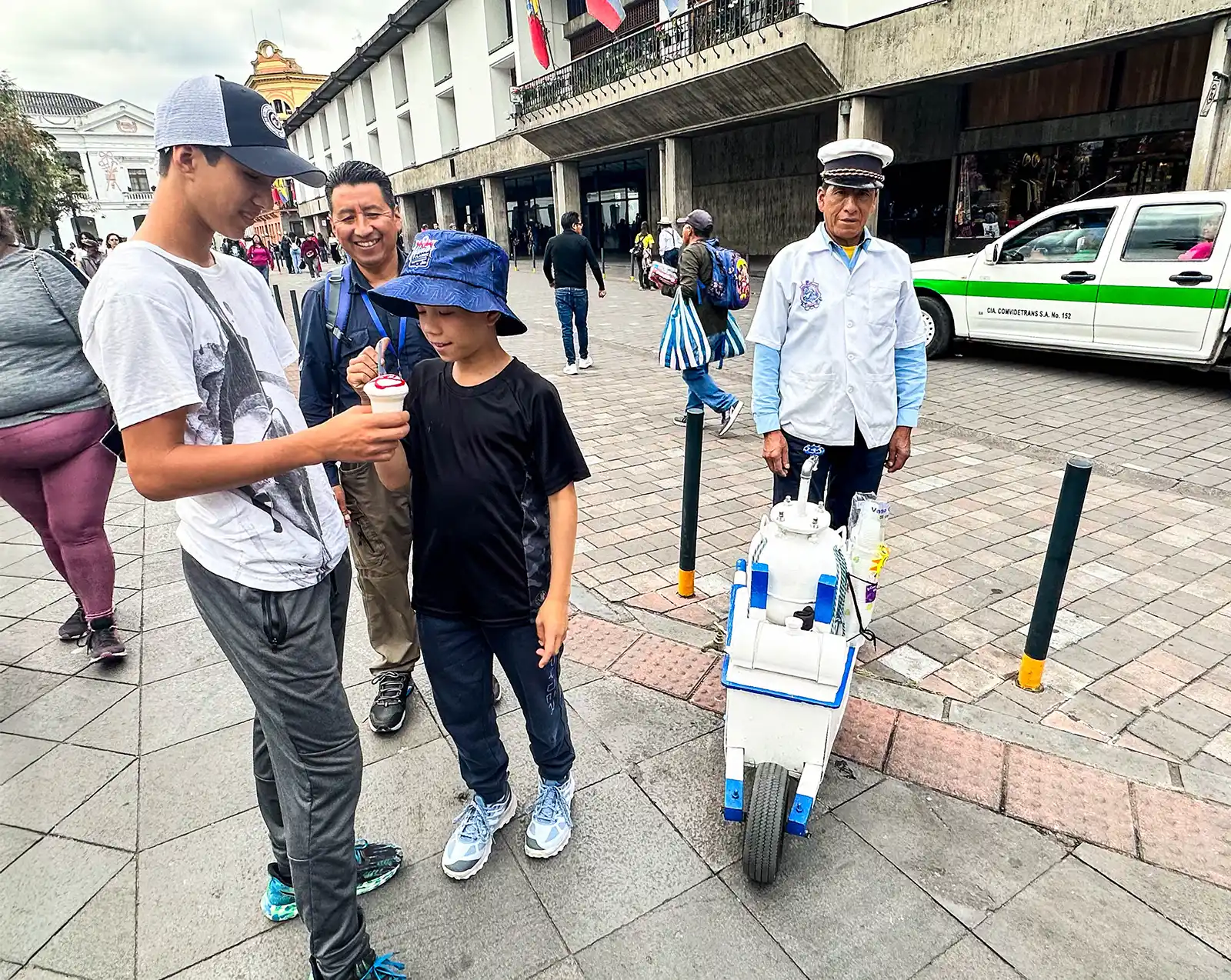
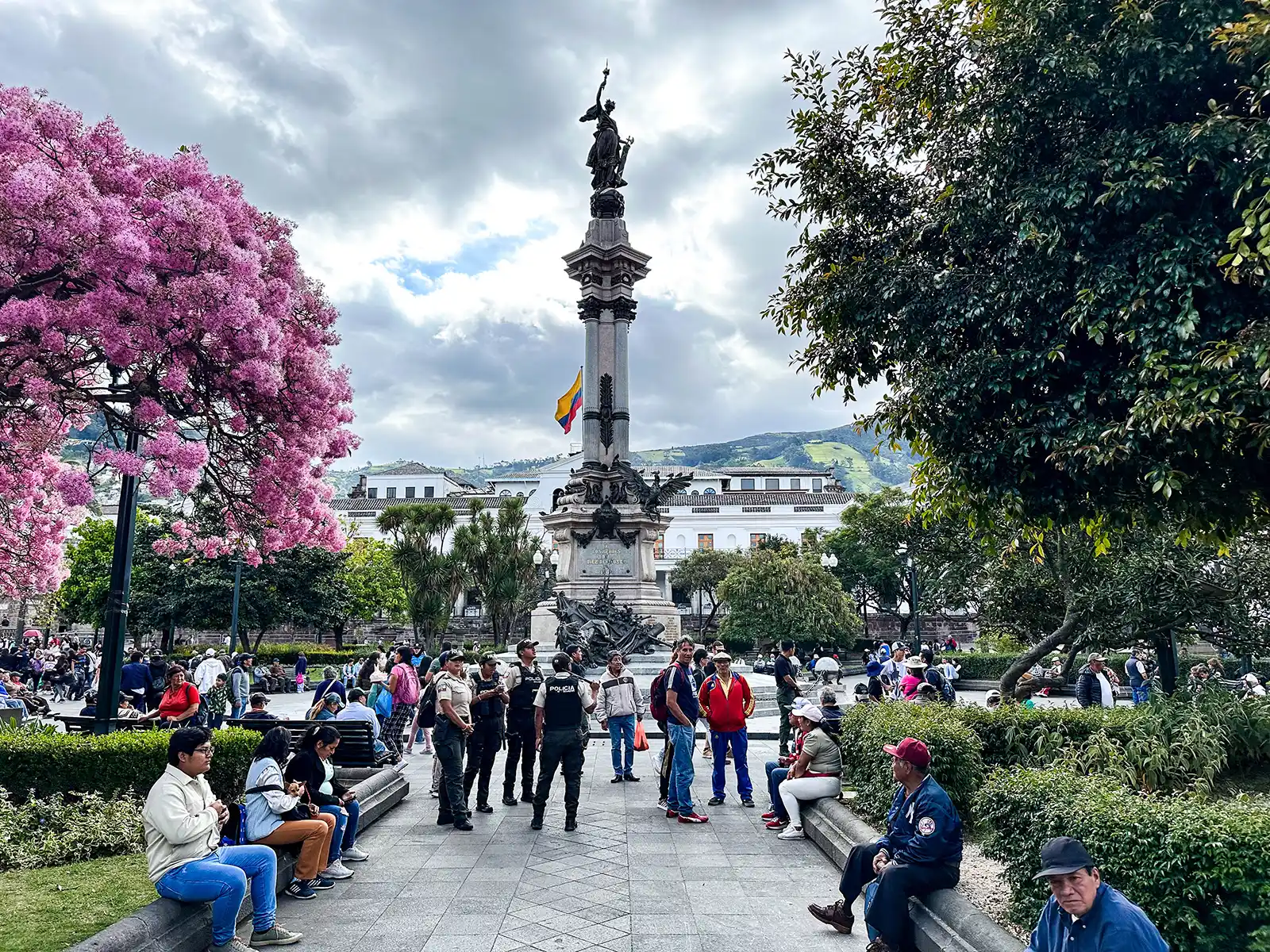
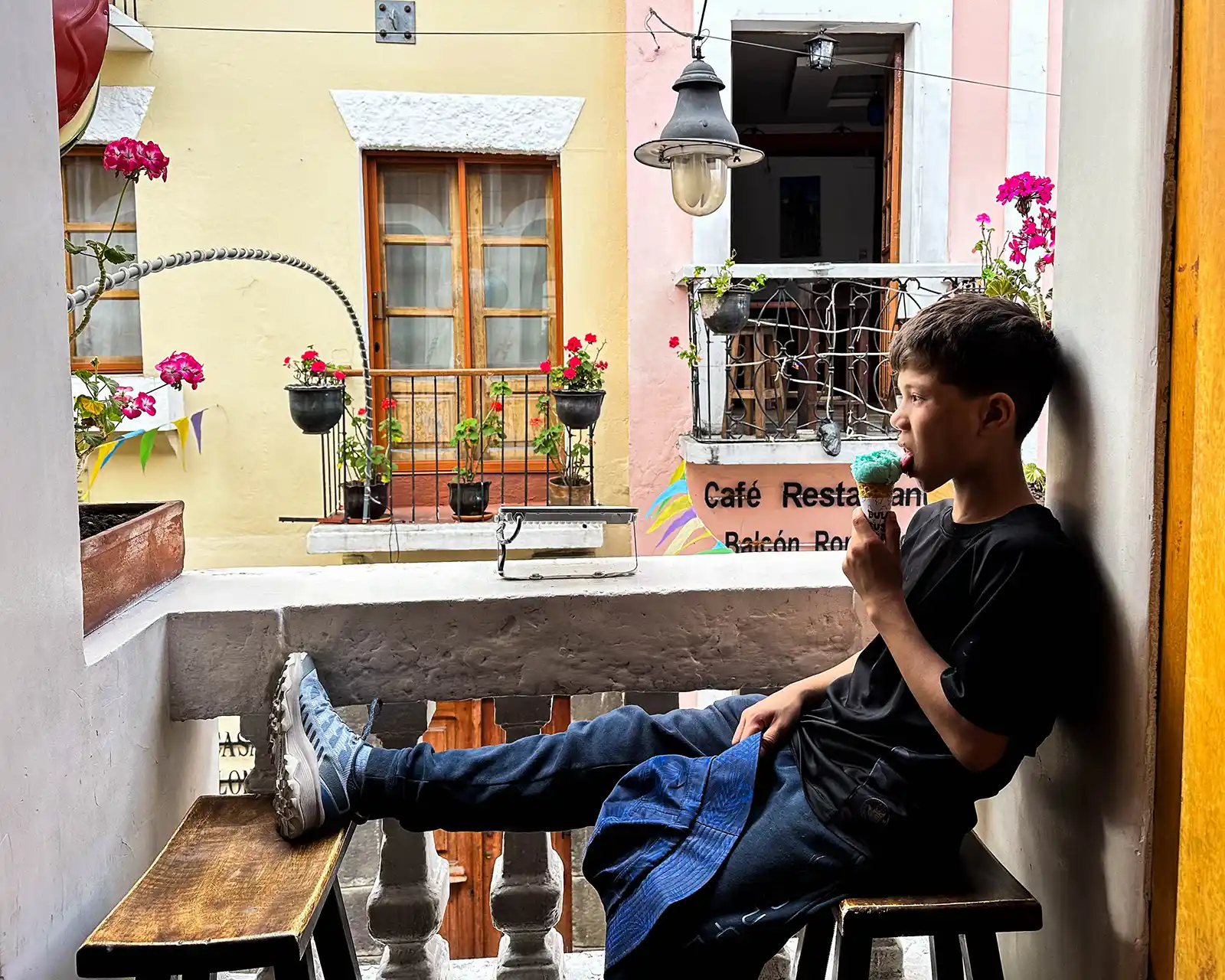
As the late afternoon sun began to cool the mountain air, we made the short walk from Casa Gagontea to the center of Quito’s old town, Plaza Grande – or Plaza de la Independencia, if you want to get official. Our route took us through Calle de la Ronda, a beautiful street that used to be the home of the city’s greatest artists back in the 15th century. For a little extra treat, we stopped at Dulce Jesus Mio for a taste of traditional Ecuadorian ice cream. Next to Turkish ice cream, this may be our new favorite.
This isn’t some manicured park where you whisper and walk on the grass. This is the city’s beating heart, a maze of historic political buildings, churches, and bustling shops where the energy just hits you.
We were peckish, after a long day of exploring, and the first thing the kids noticed was that this is where ALL of the snacks, or as the locals call it, “matar ambre (kill hunger)” are. Roasted nuts, chifle, and pinchos were everywhere. But what caught our attention were the ponche salesmen. These men, decked out in white outfits and captain’s hats, all hauled around wagons with containers that look like propane cylinders. We ordered some and were treated to a light, sweet treat that’s kind of like whipped cream.
At the center of the square is a massive Arupo tree that flowers almost year-round, making it a popular gathering spot for families.
After a long haul to South America with the family, this is exactly what we needed: room to breathe, space for the kids to stretch their legs and burn off some of that airplane wiggles. It’s a constant buzz of locals going about their day, street vendors hawking their wares, maybe a performer or two adding to the vibe. It’s a real taste of Quito life right off the bat.
In the square are a number of the most popular places to visit in Quito such as Carondelet Palace, the presidential home (you can sign up for free tours between 9:00 am and 12:00 and 3:00 pm and 5:00), the Archbishop’s Palace (a hidden gem for local Ecuadorian candy), and some of the most famous local churches, which I’ll dive into in a moment.
Iglesia de la Compañía de Jesús
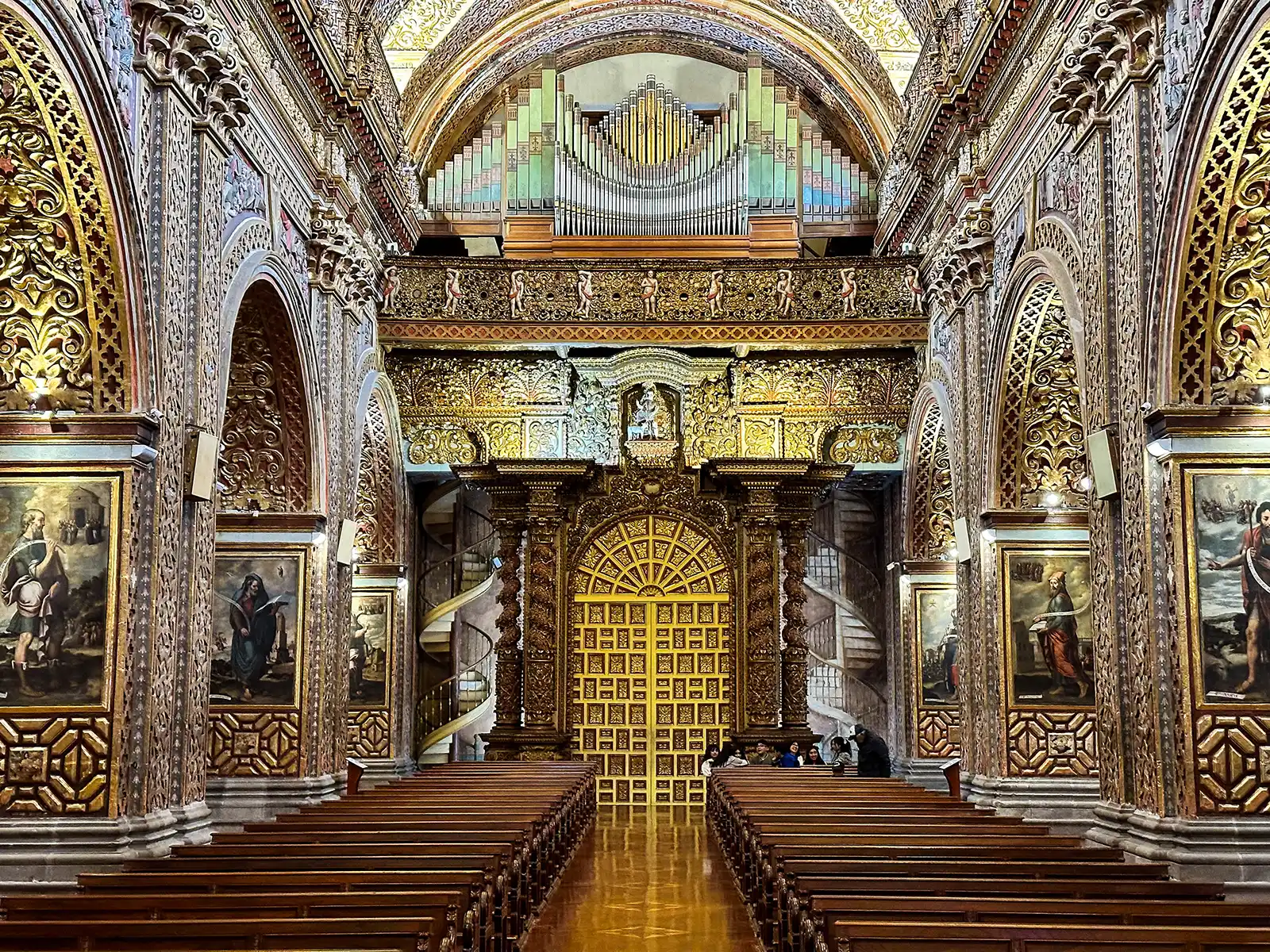
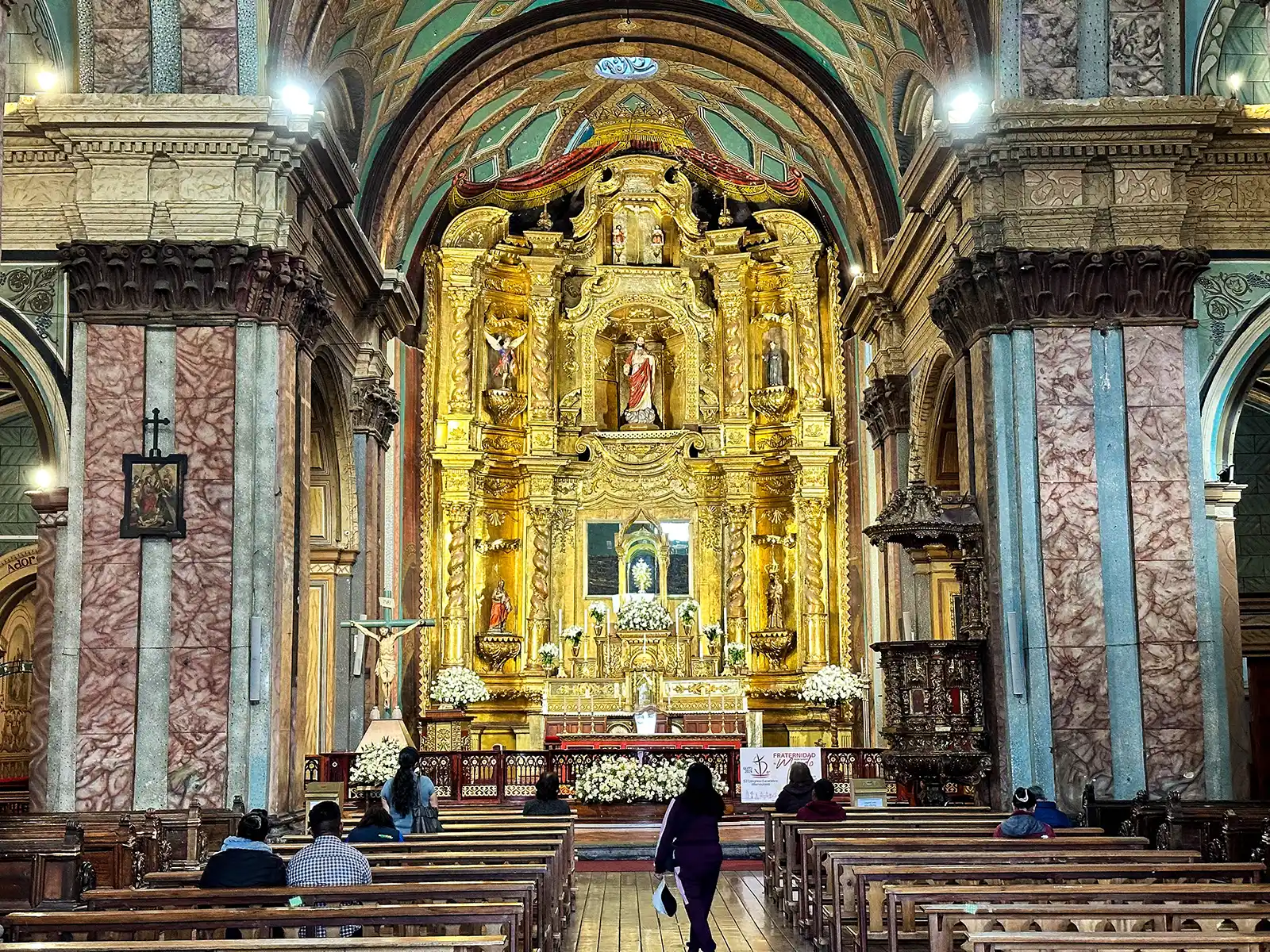
Next up, prepare to be blinded by an ostentatious presentation of gold cladding. A short walk from the Plaza took us to Iglesia de la Compañía de Jesús. This is one of the oldest and most famous churches in Quito, and legend has it that this place is dripping in something like seven tons of gold leaf. Seven. Tons. It’s baroque on steroids, ornate beyond belief, and even if the religious significance doesn’t quite land, the sheer visual spectacle will.
This place took around 160 years to build and decorate, and blends a unique (for South America) style of Baroque and Moorish designs. More similar to what we saw while traveling in southern Spain.
For a little scavenger hunt, have your kids look around the church. These types of churches are, typically, incredibly symmetrical. Iglesia de la Compañía de Jesús is no exception, except for one hilarious detail. Look at the back of the church and you’ll find just one circular staircase on the left. On the right, one has been painted as a mural so the church would still “look” symmetrical.
From here, we strolled along the promenades back toward our hotel, the colorful lights giving new life to the darkening streets. After a good rest, we’d take on more of our Quito itinerary.
Church of San Francisco
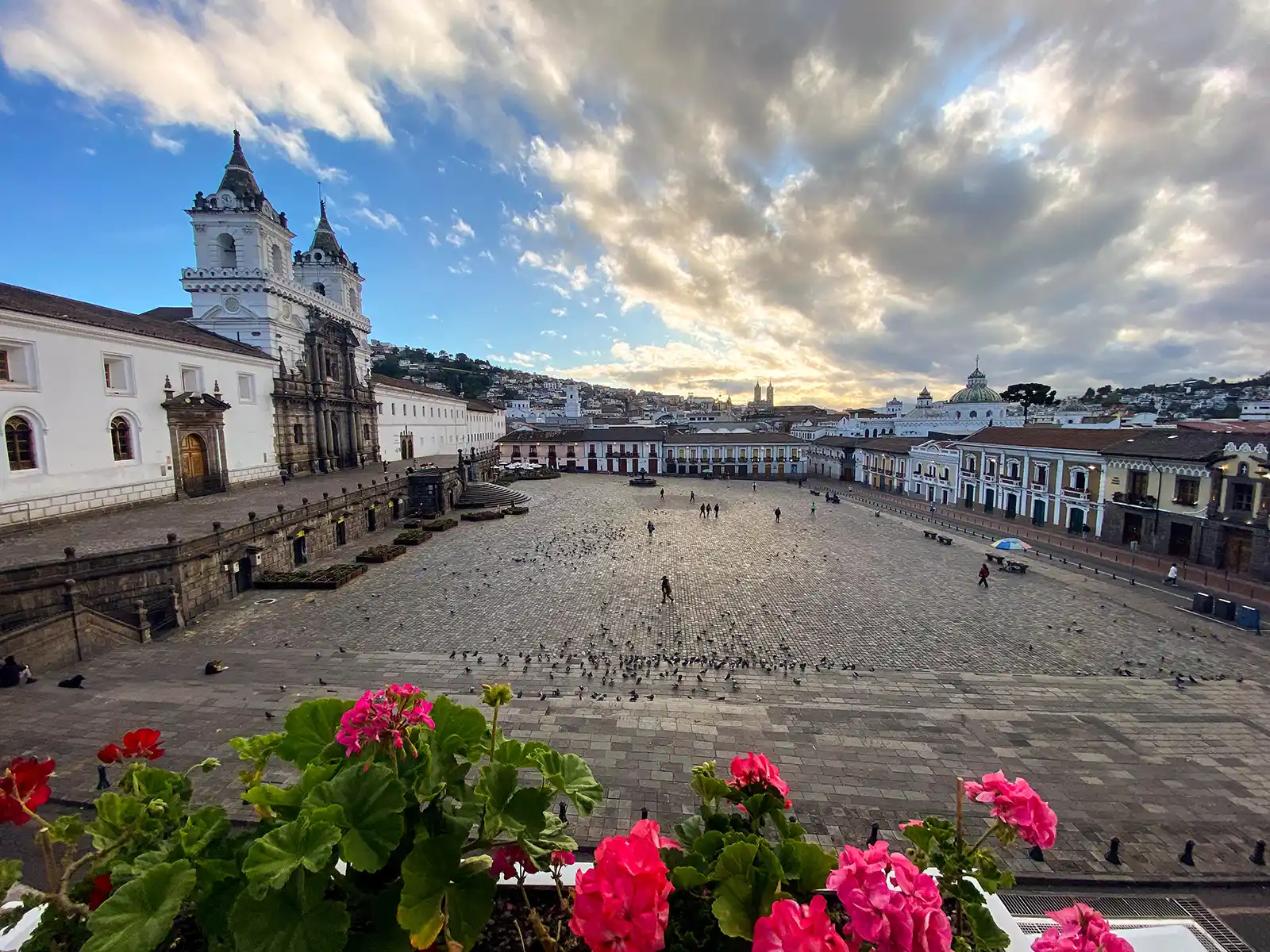
After an amazing breakfast at Casa Gagontea, where the boys each had what they called “the best hot chocolate ever (Ecuador is, after all, the birthplace of chocolate),” we set out to tackle the second day of our family travels in Quito.
Before getting too far, we decided to hop next door to the Church of San Francisco, which has a prominent view from the floor-to-ceiling windows in our hotel room. There was a church service underway, so no photos were allowed, but this may be the most beautiful church in Quito.
The Ecuator
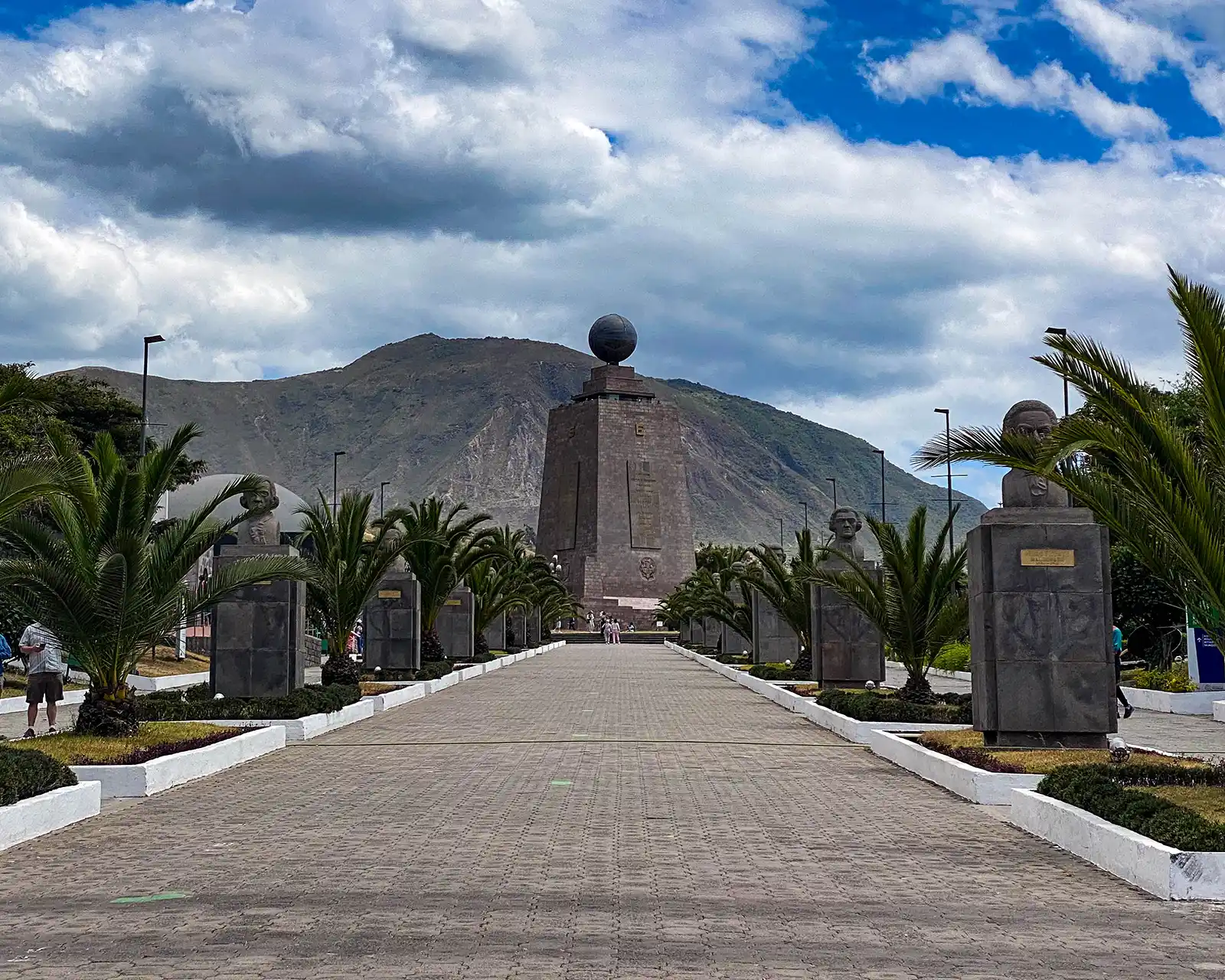

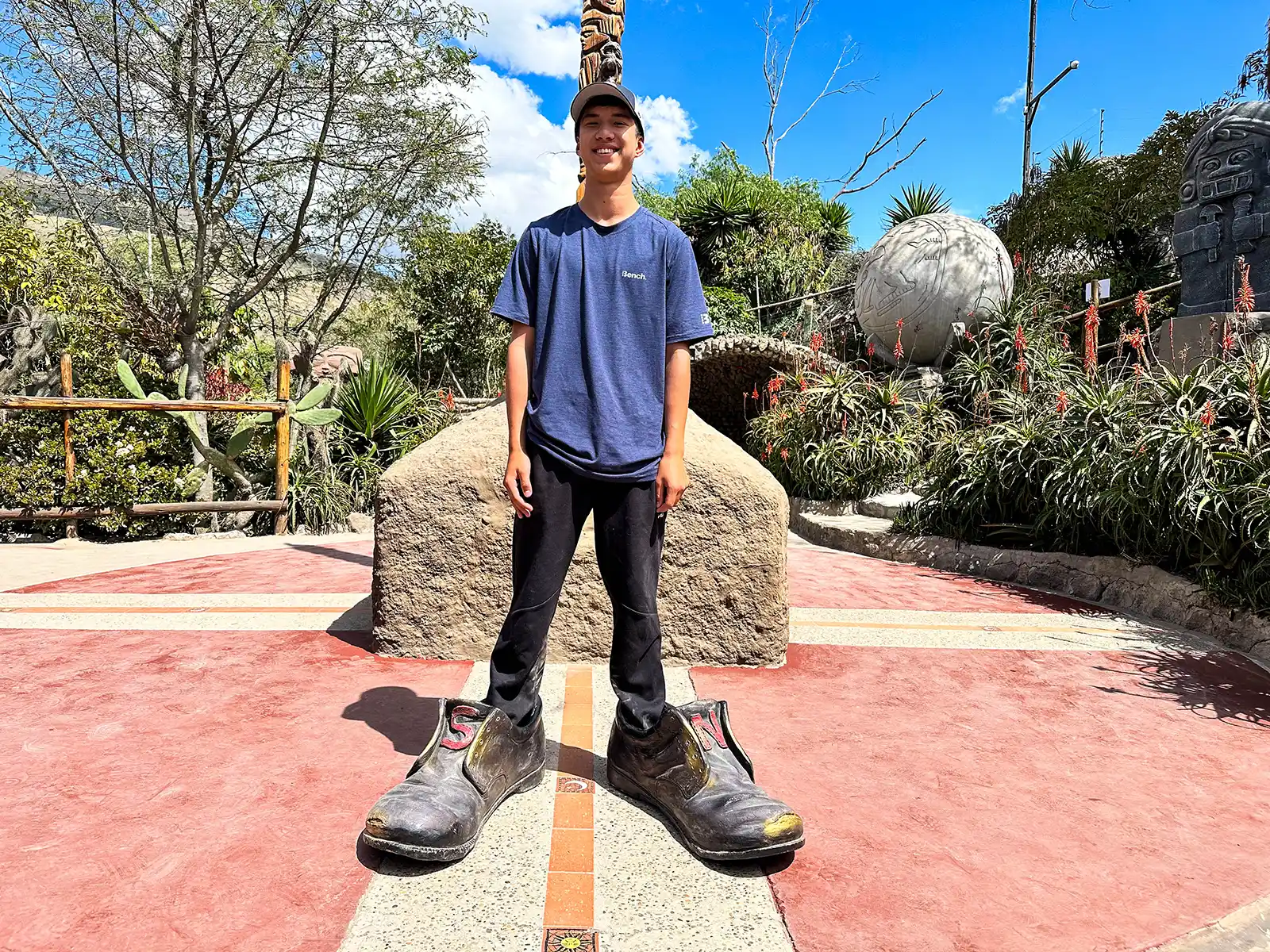
Having soaked in the city vibes, it was time to explore beyond central Quito. We hopped in Angel’s van and took the 45-minute drive north to Mitad del Mundo – Mitad del Mundo – the Middle of the World. Except … it’s not.
Now, the monument itself is a classic tourist snapshot, but it was built between 1979 and 1982, before the advent of GPS technology. A decade too early meant that Mitad del Mundo actually sits about 240 metres (790 ft) north of 0′, 00′, 00′. The monument still makes a good family backdrop, though.
The real experience is a short drive away at the Intiñan Museum. This place has stories that are more than just geographical in nature. And it’s an awesome experience in Quito for families.
The museum is a little kitschy, a little crazy, a lot fascinating, and a good deal of fun as well. We explored exhibits with poorly taxidermied anacondas, anteaters, and caimen, visited displays highlighting the lives of the Sansa tribe, famous for their creation of shrunken heads (which the boys saw actual ones on display), and Dylan even had the chance to try a blow dart gun, a traditional hunting tool used by the Indigenous Guarani communities.
The site has a lot of history and was home to villages covered by volcanic eruptions (the remains are on display in a similar way to those in Pompeii, Italy). The surprising number of dead things on display had Cohen a little freaked out, and Dylan very fascinated. It’s wild how kids take these things in very different ways.
The Intiñan Museum’s most famous experiences, though, focus on the equator itself. That invisible line that divides the northern hemisphere from the southern hemisphere. We straddled the equator in oversized clown shoes, tried to balance eggs on nails, and watched water circle this way and that down drains.
Whether these experiments are entirely scientifically accurate is almost beside the point; it’s engaging, it’s weird, and it gets the kids thinking (and laughing). It’s the kind of place where learning feels like a slightly madcap adventure.
More Things To Do In Ecuador For Families
From the Ecuadorian coast, we began a deeper exploration of mainland Ecuador, visiting Otavalo, Cotopaxi National Park, and Quilotoa before venturing to the Galapagos Islands for an eight-day cruise, and ultimately, a four-day dive into the Ecuadorian Amazon near Coca.
By no means did we see all of the top things to do in Quito, but our two-day itinerary was fascinating and fun. For those with a little more time on their hands, looking for more attractions in Quito for families, here are a few suggestions.
TelefériQo
One of the top attractions in Quito is an exhilarating ride on the TelefériQo. This cable car glides up to nearly 13,000 feet, which is one of the planet’s highest cable car experiences. In just 15 minutes, you’ll be treated to breathtaking panoramic vistas of Quito stretching out beneath you, framed by the imposing Pichincha Volcano.
At the summit, family fun awaits with scenic hiking trails, a cozy café for warm refreshments, and even the charming sight of llamas peacefully grazing. Just remember to pack warm layers and take it easy at the high altitude so you don’t get dizzy.
Quito Botanical Gardens
Parque La Carolina might best be described as Quito’s green lung. This sprawling 18-acre nature escape from the urban buzz houses a vast variety of native Ecuadorian plants, including some seriously beautiful orchids. It’s a great place for kids to stretch their legs and run wild for a bit.
There are a few must-visit attractions at the gardens. The butterfly house is a warm, humid little world filled with these delicate, colorful creatures flitting all around you. It’s like stepping into a living kaleidoscope. Then there’s the rock garden, which isn’t just a pile of stones. It’s a carefully constructed landscape with different plant life nestled amongst the rocks, offering little pathways to explore and hide-and-seek opportunities. You can pick up tickets here.
Parque Itchimbía
Perched on a hilltop, this place gives you a panorama of Quito, with the majestic Cotopaxi Volcano often looming in the distance like a silent giant. It’s not just a viewpoint, though. There are walking paths to wander, some interesting sculptures scattered around, and loads of open space for the kids to burn off any last bits of energy. Plus, it’s a local hotspot for sunset watching.
Grab some street eats from the vendors hanging around – empanadas, maybe some fresh juice – find a patch of grass, and settle in for a proper Andean sunset as the sky explodes with color over those jagged peaks. It’s a low-key, beautiful way to wind down the day.
Mariscal Craft Market
If you’re looking for a great place for some souvenirs and shopping, don’t miss the Mariscal Craft Market. This bustling textile marketplace is a treasure trove of handmade Ecuadorian souvenirs. Kids will be fascinated by the colorful traditional crafts, intricate textiles, and sparkling jewelry lining the stalls. Meanwhile, parents can discover unique keepsakes, from cozy alpaca wool blankets to beautifully woven baskets. Remember to practice your bargaining skills – older kids can even join in the fun and try to get the best deal that they can.
Family-Friendly Tours In Quito
Looking for a DIY-style adventure in Quito? I’ve mapped out some of the best tours for families in the city to help you explore the best things to do in the city.
🚶Experience Quito: Top Family-Friendly Tours
Ready for an epic family adventure in the Andean captial? These curated tours were hand-picked to help your family make the most of your visit to Quito, Ecuador.
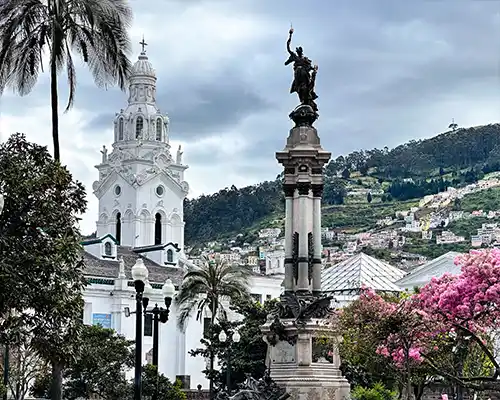
Quito Food and Walking Tour
This tour is the perfect opportunity to get to know the city of Quito and its hidden wonders, along with its landscapes you will have beautiful photographs to remember all your life.
Book on Viator →
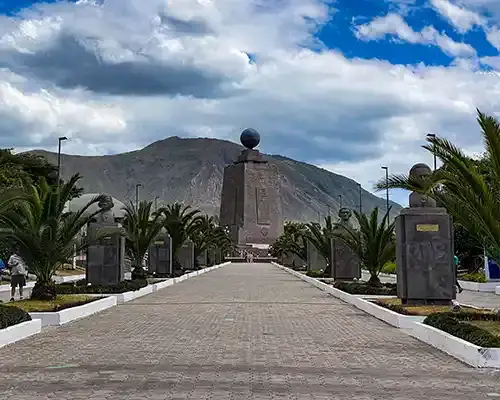
👨👩👦 Private Full-Day City Tour with Cable Car and Ecuator”
Ride on the cable car to the top of Cruz Loma Mountain to admire incredible views and visit the Middle of the World, all without having to worry about planning yourself.
Book on Viator →
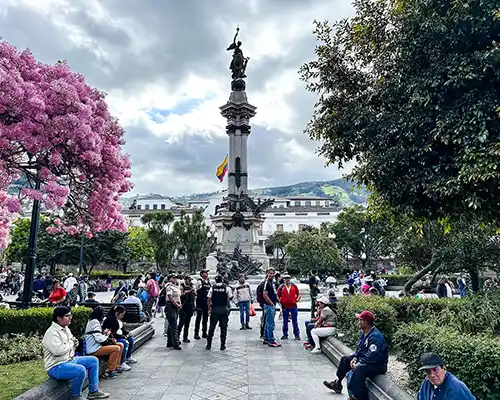
Quito Colonial City Tour with Cable Car
Embark on an unforgettable adventure: Colonial Historic Center, Cable Car, Mitad del Mundo, Museums. Expert guides, comfortable transport, and a unique experience will immerse you in the magic of Ecuador
Book on Get Your Guide →
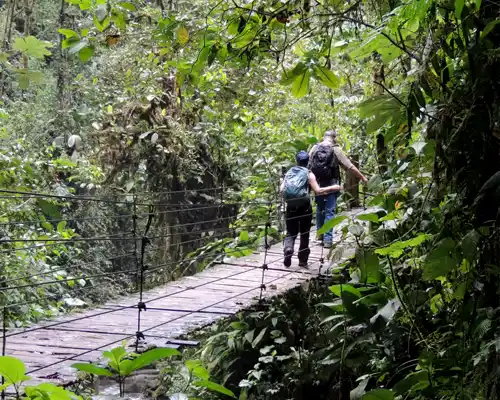
🥾 Mindo Cloud Forest Tour from Quito
Explore the mythical subtropical rainforest of Mindo with a private tour from Quito. Visit stunning waterfalls and spot hummingbirds, toucans, and other exotic creatures native to the area.
Book on Get Your Guide →
*These are affiliate links. We may earn a small commission at no extra cost to you — thank you for supporting our adventures!*
Family-Friendly Accommodations In Quito
For those planning their own family travels in Quito, I’ve mapped out some of the best hotels with excellent family-friendly rooms that are close to all of the best things to do in Quito.
Hand-Picked Accommodations in Quito for Families
These hotels and accommodations were hand-picked to help your family make the most of your visit to Quito, Ecuador.
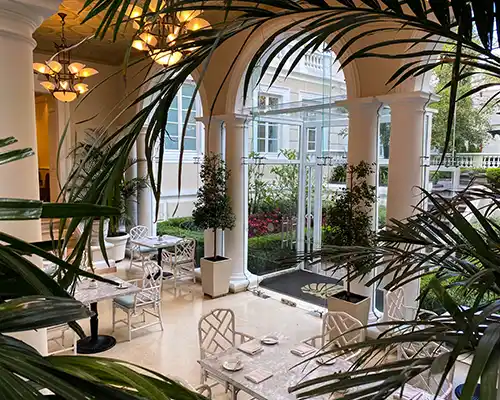
Casa Gangotena Hotel
This incredible colonial-style hotel is located in Quito’s San Francisco square and boasts panoramic views of the historic center from its terrace. Quito´s Basilica is 8 minutes driving. Casa Gangotena offers guests free American breakfast and free Wi-Fi.
Check rates on Booking →
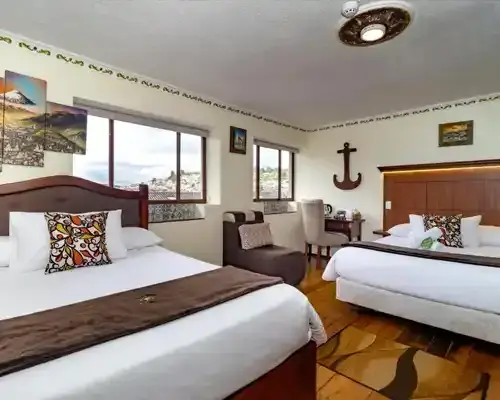
👨👩👦 Friends Hotel and Rooftop”
Friends Hotel & Rooftop in Quito offers a unique stay within a historic building. Guests enjoy garden views and a sun terrace, complemented by free WiFi throughout the property.
Check rates on Booking →
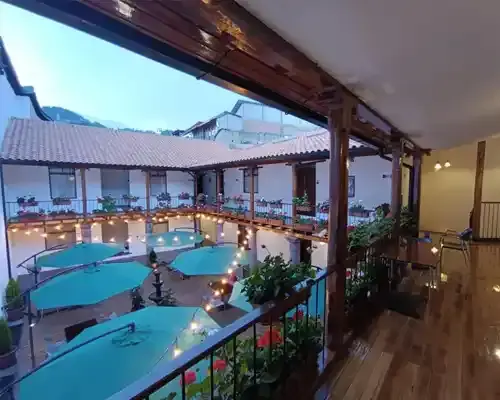
Casona Tobar Hotel
Casona Tobar Hotel in Quito offers family rooms with private bathrooms, balconies, and garden views. Each room includes a work desk, soundproofing, and free WiFi.
Check rates on Booking →

Boutique Cultura Manor by Café Cultura
Hotel Boutique Cultura Manor by Café Cultura in Quito offers family rooms with private bathrooms, garden views, and modern amenities. Each room includes a spa bath, walk-in shower, and free WiFi.
Check rates on Booking →
*These are affiliate links. We may earn a small commission at no extra cost to you — thank you for supporting our adventures!*
You May Also Like To Read:

